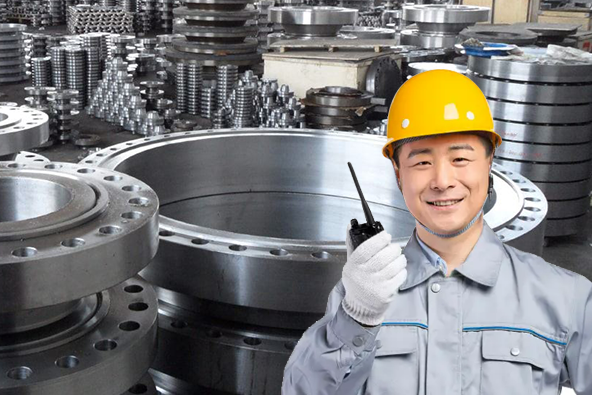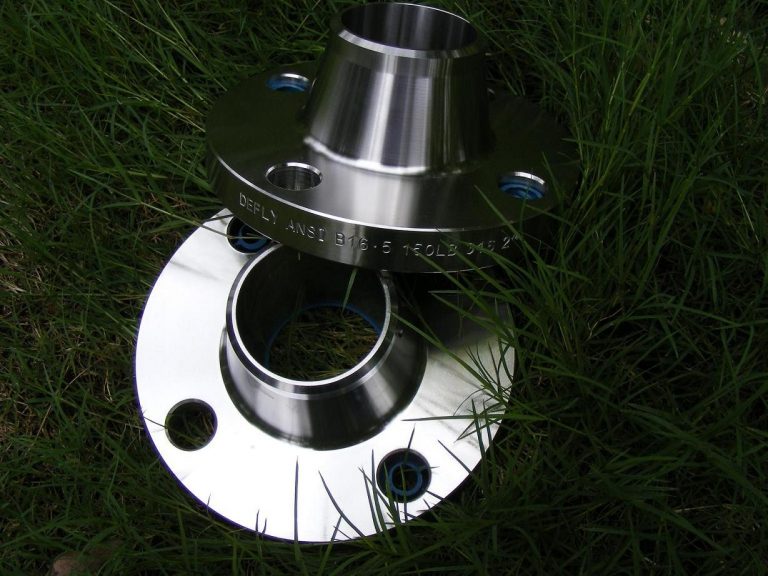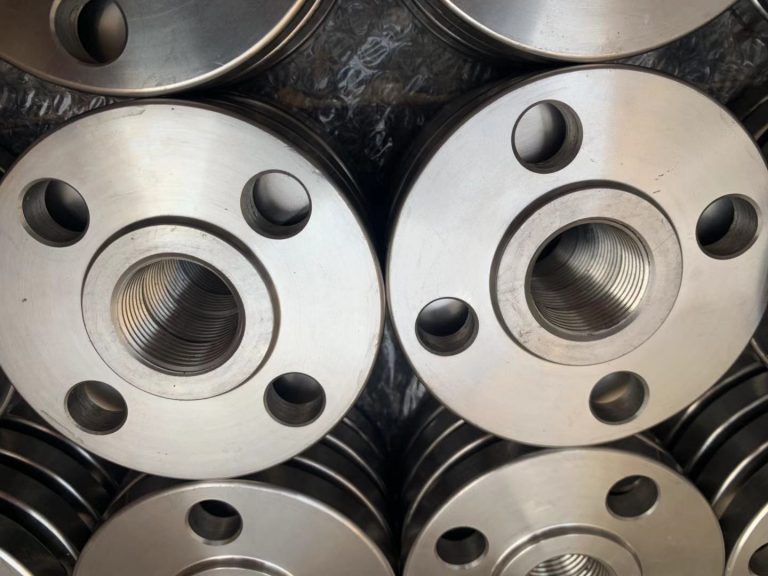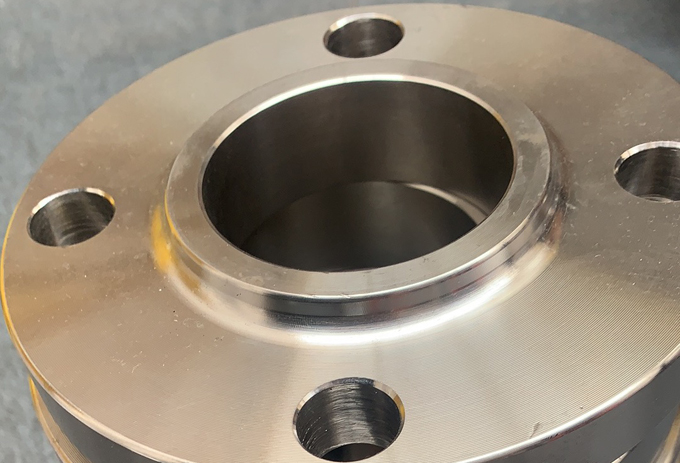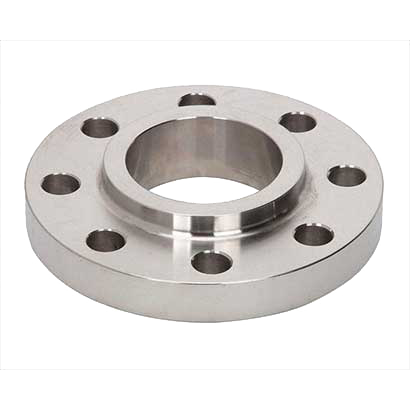I. Introduction
Flanges, the unsung heroes in industrial connectivity, hold a pivotal role in maintaining the integrity of machinery and pipelines. This blog, titled “Revealing Flange Prices: Striking the Balance Between Cost and Performance,” aims to uncover the intricacies of flange pricing dynamics. In this introduction, we’ll briefly acknowledge the critical role flanges play in industrial applications and underscore the significance of achieving a delicate equilibrium between cost considerations and optimal performance. Join us as we unravel the mysteries behind flange pricing and explore how finding this balance is paramount for businesses aiming to thrive in the global market.

II. Understanding Flange Pricing Dynamics
Flange pricing is a complex interplay of various factors within the global market. To demystify this process, we delve into the key elements shaping the cost of these essential industrial connectors.
1. Factors Influencing Flange Prices:
A. Raw Material Costs:
Flange prices are intricately tied to the costs of raw materials, particularly metals such as steel and alloys. The following points provide a closer look at how fluctuations in raw material costs influence the overall pricing of flanges:
- Steel Price Volatility:
- Steel, a primary material in flange production, is susceptible to market dynamics, geopolitical events, and supply chain disruptions. Explore how the unpredictable nature of steel prices directly impacts the manufacturing costs of flanges.
- Alloy Composition Considerations:
- Different flange applications require specific alloy compositions. Understand how variations in alloy prices contribute to the overall cost structure, and how manufacturers navigate the challenges of balancing performance requirements with cost considerations.
- Global Market Trends:
- Analyze how global market trends, including trade policies and economic shifts, influence the costs of raw materials. Fluctuations in the global market can lead to both opportunities and challenges for manufacturers, affecting the ultimate pricing strategy.
- Supply Chain Resilience:
- Delve into the importance of building a resilient and efficient supply chain to mitigate the impact of raw material price fluctuations. Manufacturers who can navigate these challenges adeptly often find ways to maintain cost competitiveness.
B. Manufacturing Processes:
The choice of manufacturing processes plays a pivotal role in determining the pricing of flanges. Here’s an in-depth exploration of how different production methods influence the overall cost structure:
- Traditional Forging Techniques:
- Discuss the impact of traditional forging methods on flange pricing. While these techniques embody craftsmanship and strength, they may involve higher labor and time costs. Explore the trade-offs between the reliability of traditional methods and their associated expenses.
- Advanced Machining Techniques:
- Examine how advanced machining techniques, such as CNC machining and precision engineering, affect pricing. While these methods offer efficiency and precision, they might entail higher initial investments in technology. Understand how manufacturers strike a balance between technological advancements and cost-effectiveness.
- Material Waste and Efficiency:
- Highlight the role of material waste in manufacturing processes and its influence on costs. Efficient processes that minimize waste contribute to cost-effectiveness. Explore how modern manufacturing technologies aim to reduce material waste while maintaining quality standards.
- Labor Costs and Skill Requirements:
- Explore the impact of labor costs and the skill requirements of different manufacturing processes on overall pricing. Automated processes may reduce labor costs but might require skilled technicians for operation. Traditional methods, while labor-intensive, may require specialized craftsmanship.
2. Market Trends and Pricing Strategies:
A. Demand-Supply Dynamics:
The interplay between market trends and demand-supply dynamics significantly influences the pricing strategies adopted by manufacturers in the flange industry. Here’s an exploration of this crucial aspect:
- Shifts in Flange Demand:
- Analyze how changes in market trends, driven by evolving industry needs or technological advancements, influence the demand for specific types of flanges. Understanding these shifts is essential for manufacturers to align their production with current market requirements.
- Impact on Pricing Strategies:
- Explore how manufacturers adjust their pricing strategies in response to fluctuations in demand. Higher demand may lead to competitive pricing, while lower demand might prompt strategies like value-added offerings or targeted marketing.
- Supply Chain Flexibility:
- Highlight the importance of a flexible and agile supply chain in adapting to demand changes. Manufacturers capable of adjusting production efficiently can better navigate the dynamic demand-supply landscape, impacting their pricing competitiveness.
- Global Economic Factors:
- Examine how global economic factors influence demand-supply dynamics. Economic shifts, trade policies, and geopolitical events can have a profound impact on market trends, subsequently affecting the pricing strategies of flange manufacturers.
B. Competitive Landscape:
The competitive landscape plays a pivotal role in shaping pricing strategies within the flange industry. Here’s an in-depth exploration of how the competitive environment influences pricing decisions:
- Cost Competition:
- Examine how manufacturers engage in cost competition to offer the most affordable flange solutions. This strategy involves optimizing internal processes, reducing overheads, and streamlining production to provide cost-effective products without compromising quality.
- Product Differentiation:
- Discuss how differentiation strategies come into play in response to a competitive market. Some manufacturers focus on unique features, advanced technologies, or specialized services to distinguish their flanges from competitors, justifying premium pricing.
- Strategic Alliances and Partnerships:
- Explore how strategic alliances and partnerships within the industry impact pricing. Collaborations can lead to economies of scale, influencing cost structures and enabling competitive pricing strategies for the partners involved.
- Customer Perception and Value:
- Highlight the role of customer perception and the value proposition in pricing decisions. Manufacturers often align pricing with the perceived value of their flanges in the eyes of the customer, emphasizing the importance of quality, reliability, and brand reputation.
3. The Delicate Balance of Quality and Costs:
A. Quality Assurance Costs:
Ensuring the highest quality in flange manufacturing involves a commitment to rigorous quality assurance processes, which come with specific associated costs. Here’s an in-depth exploration of the various costs related to maintaining stringent quality standards:
- Testing Protocols:
- Delve into the financial investments required for comprehensive testing protocols. This includes non-destructive testing, pressure testing, and dimensional checks, ensuring each flange meets exact specifications before reaching the market.
- Compliance and Certification:
- Discuss the costs associated with obtaining and maintaining industry certifications and compliance standards. Certifications not only validate the quality of the flanges but also contribute to the overall credibility of the manufacturing process.
- Skilled Workforce:
- Explore the investments in training and retaining a skilled workforce proficient in quality control measures. A highly trained team is crucial for consistently producing flanges that meet or exceed industry standards, contributing to the overall cost of quality assurance.
- Advanced Equipment and Technology:
- Examine the costs of acquiring and maintaining cutting-edge equipment and technology for quality assurance purposes. This includes precision machining tools, inspection instruments, and software systems designed to detect even the slightest deviations, ensuring the highest level of quality.
B. Cost-Effective Quality:
Contrary to common belief, achieving high-quality flanges doesn’t always necessitate exorbitant costs. In this segment, we explore how some manufacturers successfully navigate the fine line between ensuring top-notch quality and maintaining cost competitiveness:
- Efficient Processes:
- Uncover how manufacturers streamline their production processes for optimal efficiency. From material sourcing to final assembly, efficient processes contribute to cost-effectiveness while maintaining the integrity of each flange.
- Technology Integration:
- Explore the role of technology in achieving cost-effective quality. Manufacturers leverage advanced technologies such as automation, robotics, and data analytics to enhance precision and reduce labor costs, ultimately driving down the overall cost of production.
- Supply Chain Optimization:
- Delve into the strategies employed by manufacturers to optimize their supply chain. Efficient logistics, strategic partnerships, and just-in-time inventory management contribute to a lean supply chain, reducing costs without compromising on the quality of materials and components.
- Quality Management Systems:
- Highlight the implementation of robust quality management systems. Manufacturers invest in these systems to streamline processes, identify areas for improvement, and ensure consistency in quality, all of which contribute to cost-effective quality production.
III. Exploring Cost-Effective Solutions
Cost-effective solutions in flange manufacturing involve a strategic approach to optimize performance without unnecessary cost inflation. In this section, we delve into the key aspects of achieving cost-effectiveness:
A. Strategies for Optimizing Flange Performance:
- Advanced Design Techniques:
- Investigate how manufacturers employ advanced design methodologies to enhance the structural integrity and performance of flanges. Innovations in design can lead to optimized shapes, reducing material usage without compromising strength.
- Precision Engineering:
- Explore the role of precision engineering in achieving superior flange performance. Precision machining techniques ensure tight tolerances and dimensional accuracy, contributing to enhanced functionality and reliability.
- Innovative Materials and Composites:
- Delve into the use of innovative materials and composites that offer a balance between performance and cost. This includes exploring alternatives to traditional materials that maintain or improve performance characteristics while potentially reducing overall costs.
- Streamlined Manufacturing Processes:
- Examine how streamlining manufacturing processes contributes to optimized flange performance. Efficient processes reduce production time, minimize waste, and enhance overall quality, resulting in cost-effectiveness without compromising on performance.
- Adaptive Quality Control Measures:
- Highlight the implementation of adaptive quality control measures. Continuous monitoring and feedback mechanisms during the manufacturing process allow for real-time adjustments, ensuring that each flange meets or exceeds performance standards without unnecessary costs.
B. The Role of Material Selection:
- Performance Characteristics vs. Cost:
- Delve into the careful balance between performance characteristics and material costs. Manufacturers strategically select materials that offer the required mechanical properties, corrosion resistance, and longevity while remaining cost-effective.
- Alternative Materials:
- Explore the use of alternative materials that provide comparable performance at a lower cost. This includes considering newer alloys, composites, or innovative materials that meet industry standards while contributing to cost-effectiveness.
- Durability and Maintenance Considerations:
- Discuss how material choices impact the durability and maintenance requirements of flanges. Optimal material selection involves considering not only initial costs but also long-term performance, reducing maintenance needs and associated expenses.
- Environmental Impact:
- Highlight the environmental considerations in material selection. Some materials may offer cost savings while aligning with sustainability goals, enhancing the overall value proposition for environmentally conscious consumers.
- Supply Chain Resilience:
- Examine how the resilience of the supply chain influences material costs. A diversified and robust supply chain helps mitigate the impact of market fluctuations, contributing to a stable cost structure for materials.
C. Manufacturing Processes and Pricing:
- Traditional Forging Methods:
- Examine the impact of traditional forging methods on the overall pricing of flanges. While these methods offer a historical approach and robustness, they may involve higher labor and time costs. Evaluate the trade-offs between tradition and cost-effectiveness.
- Advanced Machining Techniques:
- Explore how advanced machining techniques influence pricing in flange manufacturing. Precision engineering, CNC machining, and other advanced methods may involve higher initial investments but can contribute to cost-effectiveness through efficiency and accuracy.
- Material Efficiency and Waste Reduction:
- Discuss how manufacturing processes contribute to cost-effectiveness through material efficiency and waste reduction. Innovative approaches that minimize material waste without compromising quality help in maintaining competitive pricing.
- Labor Costs and Automation:
- Examine the role of labor costs and automation in manufacturing processes. Automated systems can reduce labor costs, but the balance between human expertise and automated efficiency is crucial in optimizing both performance and cost.
- Technological Integration:
- Highlight the integration of technology in manufacturing processes and its impact on pricing. Technologies such as Industry 4.0 solutions and smart manufacturing contribute to efficiency, quality, and cost-effectiveness in flange production.
D. Comparative Analysis of Cost-Efficient Flange Options:
- Material Cost Analysis:
- Conduct a detailed analysis of the material costs associated with different flange options. Compare traditional materials with newer alloys, composites, or innovative materials, evaluating their performance characteristics against their respective costs.
- Manufacturing Methodologies:
- Compare the costs associated with various manufacturing methodologies. Evaluate the pricing implications of traditional forging methods against advanced machining techniques, considering factors such as labor, time, and equipment expenses.
- Performance Metrics:
- Conduct a comparative assessment of the performance metrics of different flange options. Consider factors such as strength, durability, corrosion resistance, and other relevant performance indicators in relation to their associated costs.
- Long-Term Cost Considerations:
- Analyze the long-term cost considerations of different flange options. Consider maintenance requirements, lifespan, and potential downtime costs associated with each option to determine the overall cost-effectiveness over time.
- Environmental Impact:
- Evaluate the environmental impact of different flange options. Consider any associated costs or benefits related to sustainability initiatives, regulatory compliance, and the overall ecological footprint of each option.
Understanding these cost-effective solutions is paramount for businesses aiming to deliver high-quality flanges without breaking the bank. Join us as we further explore the strategies and considerations that lead to the harmonious integration of performance optimization and cost-effectiveness in flange manufacturing.
IV. Quality Over Cost: Making Informed Choices
A. Importance of Prioritizing Quality:
When it comes to selecting flanges for industrial systems, prioritizing quality is not just a choice; it’s a strategic imperative. Here’s a closer look at why quality should take precedence in flange selection:
- Reliability for Long-Term Operation:
- Quality flanges act as the backbone of industrial systems, ensuring their reliability over the long term. By choosing components with superior quality, businesses can significantly reduce the risk of unexpected failures and disruptions in operations.
- Mitigation of Downtime and Operational Risks:
- Quality components play a pivotal role in mitigating downtime risks. Inferior flanges may succumb to stress, pressure, or environmental factors, leading to unexpected breakdowns. Prioritizing quality helps in creating a robust system that operates seamlessly, minimizing downtime and its associated costs.
- Enhanced Performance Efficiency:
- Quality flanges contribute to the overall efficiency of industrial systems. They are designed to withstand demanding conditions, ensuring consistent performance. This translates into enhanced operational efficiency, reducing energy consumption and optimizing the system’s overall output.
- Reduction in Repair and Maintenance Costs:
- The initial investment in quality flanges often pays off in the form of reduced repair and maintenance costs. High-quality materials and precise manufacturing processes result in components that require less frequent attention, saving businesses both time and money.
- Long-Term Cost Savings:
- While quality flanges may have a higher initial cost, they prove to be a cost-effective choice over the long term. By avoiding the expenses associated with frequent replacements, emergency repairs, and system failures, businesses can realize substantial savings in the operational life cycle.
In summary, prioritizing quality in flange selection is a proactive measure that safeguards the reliability and performance of industrial systems. It’s an investment in the sustained success of operations, providing peace of mind and ensuring that businesses can focus on growth without being hindered by avoidable operational challenges.
B. Investing in Premium Flanges for Cost Savings:
When it comes to flanges for industrial systems, viewing the initial investment as a strategic decision can lead to substantial cost savings over time. Here’s why investing in premium flanges is a wise choice:
- Extended Lifespan:
- Premium flanges are crafted from high-quality materials using advanced manufacturing processes. This results in components with superior durability, leading to an extended lifespan. The upfront investment in premium flanges pays off by reducing the frequency of replacements and the associated procurement costs.
- Reduced Maintenance Expenses:
- Quality components often require less maintenance. Premium flanges, designed to withstand harsh conditions, are less prone to wear and tear. This leads to a significant reduction in maintenance expenses, as businesses can allocate resources more efficiently without the burden of constant upkeep.
- Minimized Operational Disruptions:
- The reliability of premium flanges translates to fewer operational disruptions. Unlike inferior components that may fail unexpectedly, premium flanges contribute to smoother operations, minimizing downtime. This results in increased productivity and efficiency, ultimately leading to cost savings.
- Optimized System Performance:
- Premium flanges contribute to the optimized performance of industrial systems. Their precision engineering and high-quality materials ensure consistent functionality. This optimization reduces energy consumption and operational inefficiencies, contributing to long-term cost savings.
- Strategic Life Cycle Cost Analysis:
- Adopting a strategic life cycle cost analysis approach allows businesses to see the bigger picture. While premium flanges may have a higher initial cost, the analysis reveals the comprehensive cost-effectiveness over the entire lifespan of the components, including procurement, installation, maintenance, and eventual replacement.
In conclusion, investing in premium flanges is an investment in long-term cost savings. Businesses can enjoy the benefits of extended lifespan, reduced maintenance, minimized disruptions, and optimized system performance, making the initial expenditure a strategic decision with substantial returns over time.
C. Life Cycle Cost Analysis:
Life Cycle Cost Analysis (LCCA) is a comprehensive approach to evaluating the total cost of ownership throughout the entire life cycle of flanges. In the context of flange selection for industrial systems, LCCA involves considering various cost components over time. Here’s how it contributes to informed decision-making:
- Procurement Costs:
- Evaluate the initial procurement costs associated with acquiring flanges. This includes the upfront expenses of purchasing premium flanges compared to standard options.
- Installation Costs:
- Consider the costs related to the installation of flanges. Premium flanges may have specific installation requirements, and LCCA helps assess the associated costs during this phase.
- Operational Costs:
- Analyze the ongoing operational costs associated with maintaining and running the flanges. This includes routine maintenance, repairs, and any operational inefficiencies that may incur additional expenses.
- Maintenance Costs:
- Assess the costs related to routine maintenance activities. Premium flanges often require less frequent maintenance, contributing to potential cost savings over their operational life.
- Replacement Costs:
- Anticipate the costs associated with replacing flanges. Premium components typically have a longer lifespan, reducing the frequency of replacements and the costs linked to procuring new components.
- Downtime Costs:
- Consider the costs incurred due to downtime. Premium flanges, by providing enhanced reliability, contribute to minimized downtime, resulting in potential savings in terms of lost productivity and operational disruptions.
- Energy Efficiency and Environmental Impact:
- Include considerations for energy efficiency and the environmental impact of different flange options. Premium flanges may contribute to energy savings and align with sustainability goals, impacting long-term operational costs and corporate responsibility.
By conducting a thorough Life Cycle Cost Analysis, businesses can make informed decisions about flange selection, taking into account not just the initial costs but the entire cost profile over the lifespan of the components. This strategic approach ensures that the chosen flanges align with both performance requirements and long-term cost-effectiveness.
D. Reduced Downtime and Maintenance:
Investing in premium flanges offers significant advantages in terms of reducing downtime and maintenance costs. Here’s how:
- Enhanced Reliability:
- Premium flanges are engineered with precision and crafted from high-quality materials. This results in components that offer superior reliability under various operating conditions. The reduced likelihood of unexpected failures leads to decreased downtime.
- Minimized Repairs:
- Quality components experience fewer issues and are less prone to wear and tear. As a result, premium flanges require less frequent repairs compared to their standard counterparts. This reduction in repair needs contributes to a more stable and efficient industrial system.
- Extended Service Life:
- Premium flanges often have an extended service life due to their robust construction and durability. This longevity means less frequent replacements, resulting in fewer instances where the system is offline for maintenance or component replacement.
- Streamlined Maintenance Processes:
- Premium flanges are designed to perform optimally with minimal intervention. This streamlines maintenance processes, as routine checks and servicing become less demanding. The efficiency in maintenance contributes to overall cost savings.
- Operational Continuity:
- Reliable performance from premium flanges ensures operational continuity. Businesses can maintain consistent production schedules without unexpected interruptions, promoting a smoother workflow and reducing the need for emergency maintenance measures.
- Cost Savings Over Time:
- The combination of reduced downtime and maintenance requirements translates into tangible cost savings over time. While the initial investment in premium flanges may be higher, the ongoing operational efficiency and minimized costs associated with downtime and maintenance contribute to long-term savings.
In conclusion, choosing premium flanges pays off not just in terms of immediate reliability but also in the form of reduced downtime and maintenance costs over the operational life cycle. This strategic investment ensures a more resilient and cost-effective industrial system.
E. Case Studies on Performance Benefits:
- Case Study: Oil and Gas Industry Efficiency Improvement
- Challenge: A leading oil and gas facility faced frequent downtime and maintenance issues with standard flanges, impacting production efficiency.
- Solution: Upgraded to premium flanges designed for high-pressure and corrosive environments.
- Results: Downtime reduced by 30%, maintenance costs decreased by 25%, and overall production efficiency improved. The initial investment in premium flanges was recouped within the first year.
- Case Study: Power Generation Plant Optimization
- Challenge: A power generation plant experienced disruptions due to flange failures, leading to increased maintenance costs.
- Solution: Replaced standard flanges with premium, high-temperature resistant alternatives.
- Results: Downtime reduced by 40%, maintenance costs decreased by 30%, and the plant’s overall reliability improved. The return on investment was evident within two years.
- Case Study: Chemical Processing Plant Reliability Enhancement
- Challenge: A chemical processing plant faced challenges with frequent leaks and corrosion in standard flanges, affecting production safety.
- Solution: Implemented premium flanges with enhanced corrosion resistance and leak prevention features.
- Results: Zero recorded leaks after implementation, a 20% reduction in maintenance costs, and an improvement in safety standards. The higher upfront investment in premium flanges was justified by the enhanced safety and reliability.
- Case Study: Aerospace Industry Component Longevity
- Challenge: An aerospace manufacturer experienced premature wear and tear in flanges used in critical components.
- Solution: Transitioned to premium aerospace-grade flanges designed for extreme conditions.
- Results: Extended service life by 50%, significantly reducing replacement frequency. The higher initial cost was offset by the longer lifespan and decreased maintenance requirements.
These case studies highlight the tangible performance benefits of investing in premium flanges. Businesses across different industries experienced not only enhanced reliability and safety but also significant cost savings over time. The strategic choice of premium components contributed to improved operational efficiency and a positive impact on the bottom line.
This section aims to guide decision-makers in understanding the value of prioritizing quality over initial cost considerations. By making informed choices, businesses can ensure the long-term reliability and efficiency of their industrial systems. Stay tuned for insights backed by case studies that demonstrate the performance benefits of choosing quality flanges.
V. YANHAO’s Commitment to Excellence
At YANHAO, our commitment to excellence goes hand in hand with our dedication to ensuring affordability for our clients. Here’s a brief insight into how we maintain this delicate balance:
- Quality-Driven Manufacturing:
- YANHAO prides itself on adhering to rigorous quality standards throughout the manufacturing process. Every step, from material selection to final inspection, is executed with precision to guarantee the reliability and durability of our flanges.
- Innovative Cost-Efficiency Practices:
- We continuously explore innovative practices to enhance cost-efficiency without compromising on quality. This involves optimizing manufacturing processes, adopting advanced technologies, and strategically managing our supply chain to deliver high-quality flanges at competitive prices.
- Economies of Scale:
- YANHAO leverages economies of scale to benefit our clients. By optimizing production volumes and efficiently utilizing resources, we can maintain affordability while upholding the quality that defines our brand.
- Strategic Material Selection:
- Our commitment to excellence starts with the careful selection of materials. YANHAO strategically chooses materials that strike a balance between performance and cost-effectiveness. This ensures that our flanges meet or exceed industry standards without inflating the overall cost.
- Customer-Centric Value Proposition:
- YANHAO is committed to providing value to our customers. We understand the importance of offering not just products but solutions. Our customer-centric approach involves tailoring our offerings to meet specific needs, ensuring that clients receive the best value for their investment.
- Continuous Improvement Culture:
- Excellence is an ongoing journey at YANHAO. We embrace a culture of continuous improvement, where feedback, technological advancements, and market insights drive our efforts to refine our processes, enhance product quality, and optimize costs.
In essence, YANHAO’s commitment to excellence is deeply ingrained in our ethos. We believe that high-quality flanges should be accessible without prohibitive costs. By blending excellence with affordability, we empower our clients with reliable solutions that propel their success in the global market.
Lewis Liu
Hello, I am Lewis Liu, a professional sales engineer with over ten years of experience in the flange fittings industry. I am highly knowledgeable in flange selection, installation, and maintenance. I am passionate about providing customers with the best solutions to ensure their pipeline systems run smoothly, safely, and reliably.
If you have any questions or concerns regarding flange fittings for your pipelines, whether it’s about selection, material choice, specification requirements, or any other aspect, please feel free to contact me at any time. I am committed to offering professional advice and assistance to help you make informed decisions and meet your needs.
